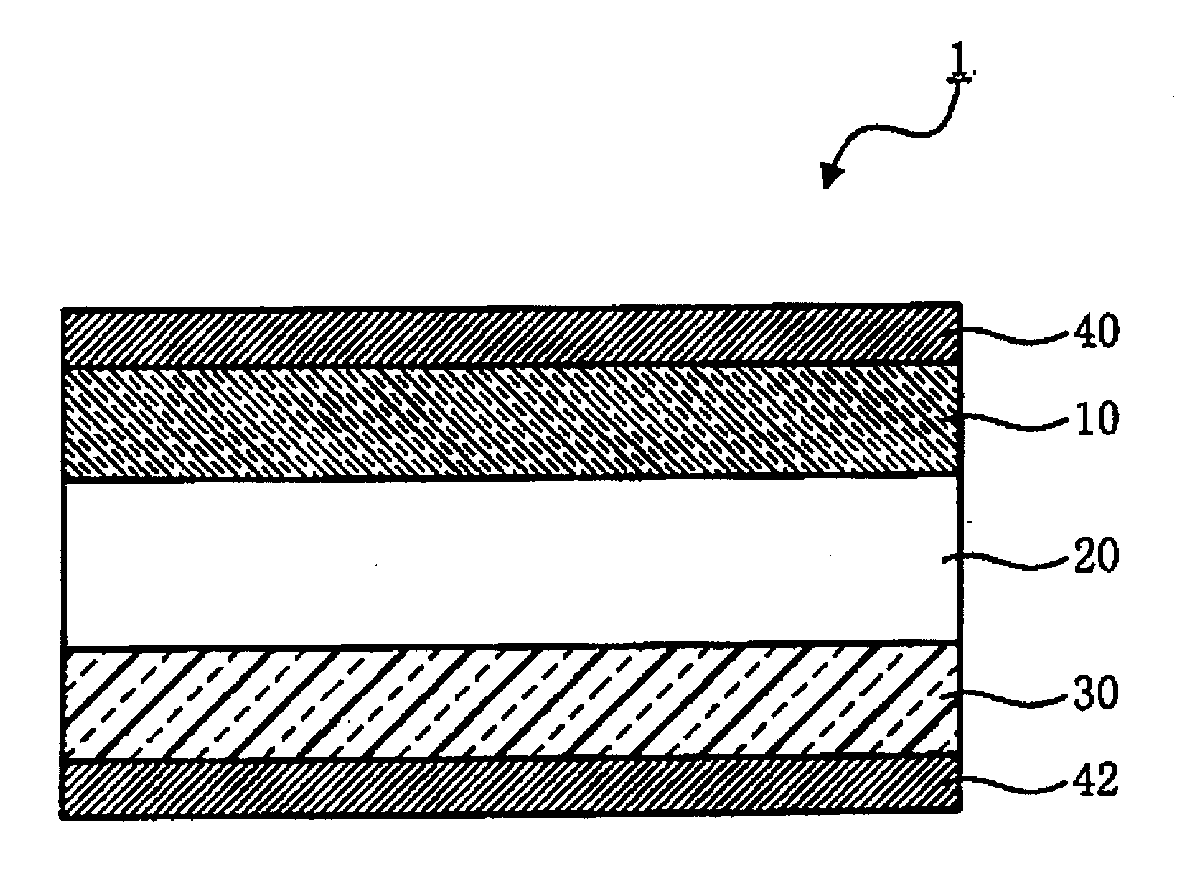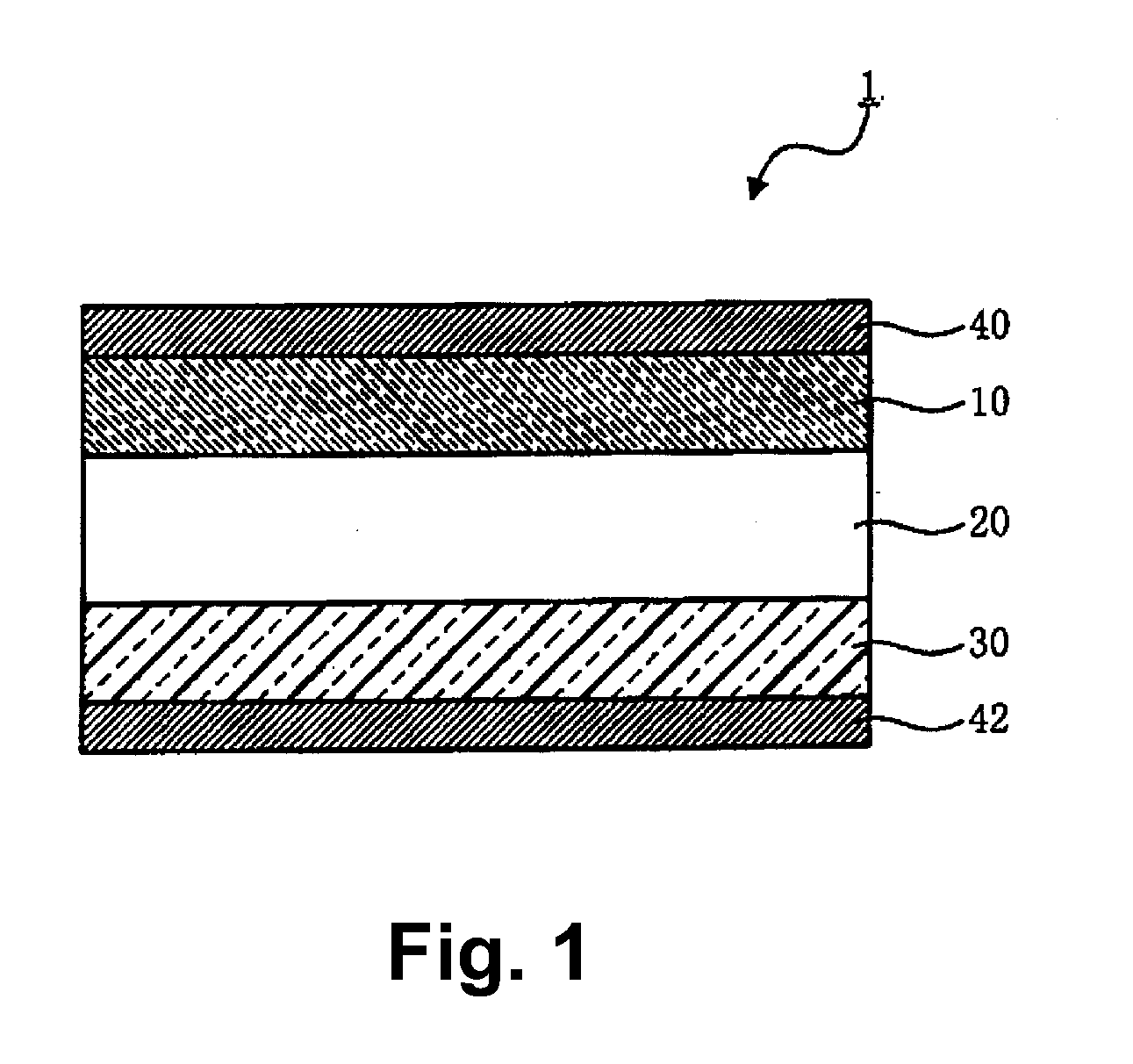All-solid-state lithium battery
a lithium battery, all-solid-state technology, applied in the direction of nickel compounds, non-aqueous electrolyte cells, cell components, etc., can solve the problems of flammable organic solvent electrolyte, essential risk to the safety of lithium batteries, side reactions, etc., and achieve excellent safety and output characteristics.
- Summary
- Abstract
- Description
- Claims
- Application Information
AI Technical Summary
Benefits of technology
Problems solved by technology
Method used
Image
Examples
example 1-1
Synthesis of Cathode Active Material
[0071]Cobalt metal in the amount of 100 g was dissolved in nitric acid, and diluted with pure water to be in the amount of 1650 ml. Then 820 ml of 4N sodium hydroxide solution was added, and the resulting mixture was stirred and filtered to obtain a cake of hydroxide. This cake was calcined at 850° C. for 4 hours to obtain 137 g of cobalt oxide. Lithium carbonate (Li2CO3) was added to the thus obtained cobalt oxide at Li / Co=1.02, mixed, and calcined preliminarily at 700° C. for 4 hours, then at 1000° C. for 5 hours to obtain an objective LixCoO2 (x=1.02). The following measurements were made, and the results are shown in Table 1.
(A) Particle Size
[0072]The particle size was measured with a laser diffraction particle size analyzer (MASTERSIZER 2000 manufactured by SYSMEX CORPORATION).
(B) Specific Surface Area (BET Surface Area)
[0073]The specific surface area was measured by N2 adsorption BET method in “NOVA 2000” (trade name, manufactured by QUANTAC...
example 1-2
[0080]An all-solid lithium battery was prepared and evaluated in the same way as in Example 1-1, except that, in the synthesis of the cathode active material, lithium carbonate (Li2CO3) was added at Li / Co=1.04 to synthesize LixCoO2 (x=1.04), with which a cathode mixture was prepared. The results are shown in Table 1.
example 1-3
[0081]An all-solid lithium battery was prepared and evaluated in the same way as in Example 1-1, except that, in the synthesis of the cathode active material, lithium carbonate (Li2CO3) was added at Li / Co=1.01 to synthesize LixCoO2 (x=1.01), with which a cathode mixture was prepared. The results are shown in Table 1.
PUM
 Login to View More
Login to View More Abstract
Description
Claims
Application Information
 Login to View More
Login to View More - R&D
- Intellectual Property
- Life Sciences
- Materials
- Tech Scout
- Unparalleled Data Quality
- Higher Quality Content
- 60% Fewer Hallucinations
Browse by: Latest US Patents, China's latest patents, Technical Efficacy Thesaurus, Application Domain, Technology Topic, Popular Technical Reports.
© 2025 PatSnap. All rights reserved.Legal|Privacy policy|Modern Slavery Act Transparency Statement|Sitemap|About US| Contact US: help@patsnap.com


